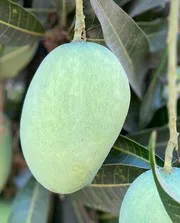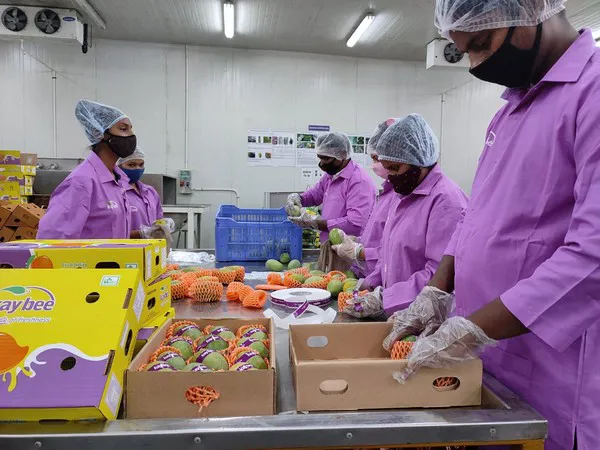The mango season in India is reaching its conclusion, and overall it’s been a positive season both domestically and in terms of exports. But the success in the United States has been specifically solid, says Kaushal Khakhar, CEO of Indian fresh produce exporter Kay Bee Exports:
“The 2023 mango season was a success and we saw a jump in the volume ordered from several markets such as the USA. Most of the demand for Indian mango varieties there is driven by the large Indian diaspora of 4.7 million people residing in the USA. People of Indian origin have a strong emotional connection and childhood memories linked to the mango season, which is widely celebrated in India. So, not only will the mango consumption be high, they will also strictly want to consume an Indian variety.”

The fact that the Indian mangoes are shipped via air gives them the advantage in terms of freshness when they reach the destination in the United States, Khakhar explains. “Indian mangoes can only be air-freighted, while those from South America are conveyed by road to the USA. By using air-freight, the aroma and freshness of the mangoes are preserved and although they are a bit costlier; they remain the preferred option for Indian residing in the USA. Therefore it was great to note that the air freight rates, which were quite prohibitive these past few years due to Covid, have now normalised. The price gap between an Indian mango and a South American one is reduced and no longer a deal breaker for many consumers.”
 Thankfully for both Kay Bee and importers, prices of air freight have finally come down significantly after the huge price increase that happened during the 2020 pandemic, Khakhar states: “Finally, while the shipping of Indian mangoes to the US was suspended during the pandemic, it restarted in 2022, although on a limited scale, and is drastically increasing for its second year. All these factors combined with the good weather condition and early start of the mango season in India explain why we are on target to clock approximately 2,000 tons this year, which is double the volume of the 2022 season.”
Thankfully for both Kay Bee and importers, prices of air freight have finally come down significantly after the huge price increase that happened during the 2020 pandemic, Khakhar states: “Finally, while the shipping of Indian mangoes to the US was suspended during the pandemic, it restarted in 2022, although on a limited scale, and is drastically increasing for its second year. All these factors combined with the good weather condition and early start of the mango season in India explain why we are on target to clock approximately 2,000 tons this year, which is double the volume of the 2022 season.”
Kay Bee aims to reach Indian consumers in countries outside of India with their mango season, as the mango is important to the Indian culture: “The demand for Indian mango remains strong in countries where a large Indian origin population resides. Apart from the USA, another example of this is the United Kingdom. There, we have programs in place with several major retailers to supply mango throughout the season. Although efforts are being put to make Indian mangoes better known in the rest of Europe, this remains a challenge. Although the eating quality of Indian mangoes is superior, other origins have a longer shelf-life and are more affordable,” Khakhar says.
“However, over the past few years we have seen some countries who are willing to give it a try and being successful at it. We receive increased and renewed programs year on year. This is the case with Japan, which is a country particularly focused on the aesthetic appearance of fresh produce, but where Indian mangoes have been a success for the past two seasons. It is also the case with South Africa and Malaysia, from where we see a lot of interest.”

There have been rains all over India lately, but Khakhar emphasizes this isn’t out of the ordinary so close to the monsoon season. It certainly didn’t have much of an impact on Kay Bee’s mango season: “Although it is true that towards the end of May and the beginning of June some short episodes of rains are likely to happen, because we are simply getting closer to the monsoon season, this has not negatively impacted the Indian mango production. The volume of mango produced (21 million tons in 2022) does not get impacted by such short occurrences of bad weather and mangoes are also grown on a wide geographic area. This guarantees a constant availability for both the domestic and export markets.”
Despite the mango season reaching its conclusion in a couple of weeks, Kay Bee still works on future objectives: “We want to strengthen our market share in countries where Indian mango varieties are already well-known, but also to introduce them in other countries. To do so, it’s crucial to find like-minded partners in those countries who are searching for high-quality, premium and exclusive products to launch, in order to make it a long-term success. For the past couple of years, we also see more and more opportunities for our brand of premium mango deliveries at people’s doorstep, Mango First, across the USA and the UK. Mango gifting to friends and family remains imprinted in the Indian culture and this is why we strongly believe Mango First can further develop in these countries where the Indian origin population is large,” Khakhar concludes.
For more information:
Kay Bee Exports
Tel: +91 88 79 000 973
Email: Export@kaybeeexports.com
www.kaybeeexports.com
